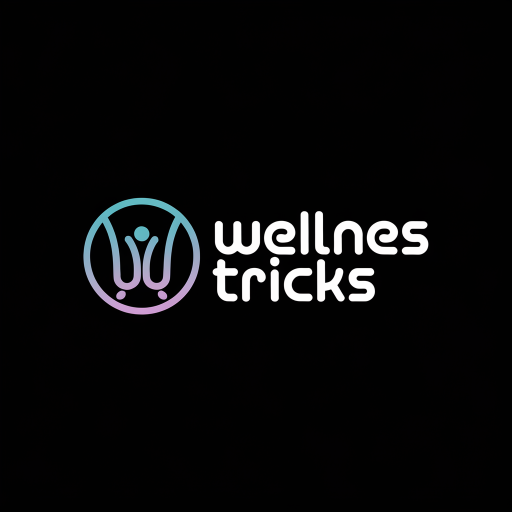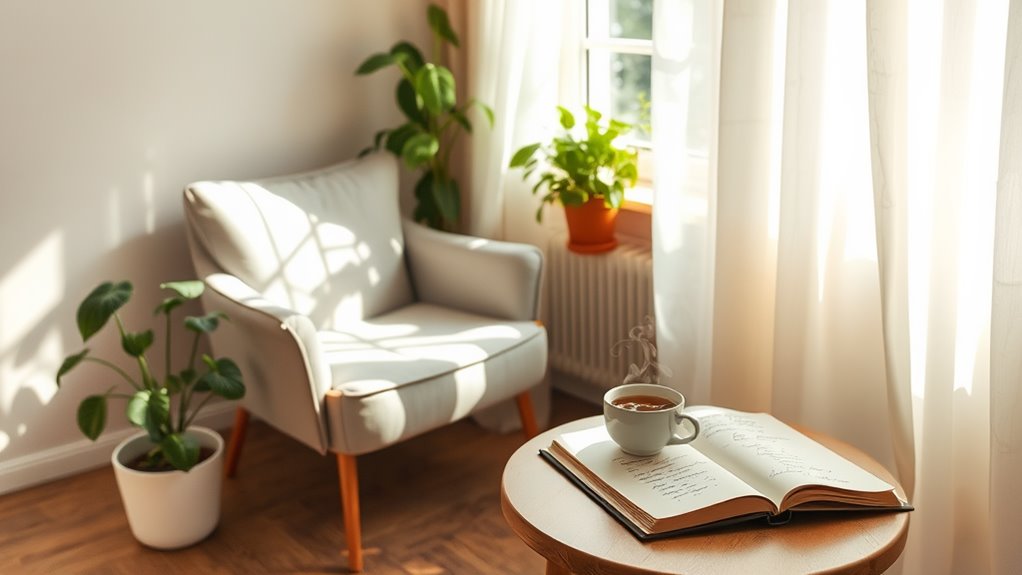Anxiety Hacks That Actually Work (No Apps Needed)
Just as a sailor relies on the stars to navigate through dark waters, you can find your way through anxiety with simple, effective techniques. You don’t need fancy apps or complicated systems; just a few practical strategies can make a significant difference. From deep breathing to mindfulness, these hacks require only your commitment. Curious about how to implement these methods into your daily routine? Let’s explore them together.
Key Takeaways
- Practice deep breathing exercises by inhaling through your nose, holding briefly, and exhaling slowly to calm your nervous system.
- Dedicate a few minutes daily to mindfulness or meditation, focusing on your breath’s natural rhythm to enhance mental clarity.
- Incorporate regular physical activity, like brisk walking, to boost endorphins and reduce stress hormones effectively.
- Journal daily to express thoughts and emotions, providing clarity and insight into your feelings and reducing anxiety.
- Use visualization techniques by imagining peaceful places, engaging all senses to promote relaxation and control over anxiety.
Deep Breathing Exercises
Have you ever noticed how your breath changes when you feel anxious? Rapid, shallow breaths can heighten your stress.
To find anxiety relief naturally, try deep breathing exercises.
Begin by inhaling deeply through your nose, allowing your diaphragm to expand. Hold for a moment, then exhale slowly through your mouth.
This simple practice calms your nervous system and restores balance. Using a quick breathing technique can also help you regain focus and peace in stressful moments.
Aim for a few minutes daily, especially during stressful moments.
You’ll feel more centered and in control.
Mindfulness and Meditation Techniques
After practicing deep breathing exercises, you might find that incorporating mindfulness and meditation techniques can further enhance your ability to manage anxiety.
Start by setting aside just a few minutes each day. Focus on your breath, observing its natural rhythm without trying to change it.
If your mind wanders, gently bring your attention back to your breath. You can also try guided imagery—imagine a peaceful place and immerse yourself in its details.
Consistently practicing these techniques can help you cultivate a sense of calm and presence, making it easier to navigate daily stressors with greater ease and clarity. Additionally, dedicating just 10 minutes daily to meditation can significantly improve brain function and overall well-being.
Physical Activity and Movement
Physical activity plays a crucial role in managing anxiety, helping to release endorphins that elevate your mood.
Incorporating movement breaks throughout your day can also refresh your mind, making it easier to cope with stress.
Research shows that transforming habits can significantly reduce anxiety levels, making exercise a simple and effective part of your routine.
Benefits of Exercise
Engaging in regular exercise can be a game-changer for managing anxiety. When you move your body, you boost your endorphins, which helps elevate your mood. Exercise also reduces stress hormones, making it easier to cope with daily challenges. Plus, it provides a sense of accomplishment, empowering you to face your fears.
You don’t need to run marathons; even a brisk walk can make a difference.
By incorporating physical activity into your routine, you’re not just improving your physical health—you’re nurturing your mental well-being.
Movement Breaks Strategy
How often do you find yourself sitting for long stretches, feeling your anxiety creep in?
It’s easy to get caught up in work or screens, but taking movement breaks can really help.
Set a timer to remind yourself to stand up and stretch every hour.
Even a quick walk around your space can release pent-up energy and clear your mind.
Try some deep breathing while moving; it’ll enhance relaxation and reduce tension.
Journaling for Emotional Release
Journaling can be a powerful tool for releasing your emotions and gaining clarity.
By exploring its benefits, using prompts for reflection, and maintaining a consistent practice, you can create a safe space for your thoughts. Establishing a bedtime journaling habit can further enhance your emotional release by providing a structured time to reflect on your day.
Let’s look at how journaling can help you navigate your feelings and reduce anxiety.
Benefits of Journaling
Ever wonder why so many people turn to journaling when they’re feeling overwhelmed?
Journaling offers a safe space to express your thoughts and emotions without judgment. It can help you process feelings, making them easier to understand and manage.
When you write down your worries, you release pent-up emotions, reducing anxiety and stress. This practice allows you to clarify your thoughts, identify patterns, and gain insights about what’s bothering you.
Plus, journaling can foster self-compassion, encouraging you to treat yourself gently during tough times.
Ultimately, it’s a powerful tool for emotional release and personal growth. Give it a try!
Prompts for Reflection
What if you had a few guiding questions to help unravel the tangled thoughts in your mind? Journaling can be a powerful tool for emotional release. Here are some prompts to spark your reflection:
| Prompt | Purpose |
|---|---|
| What am I feeling right now? | Identify your emotions |
| What triggered these feelings? | Understand the source |
| What do I need to let go? | Release negativity |
| What am I grateful for today? | Shift focus to positivity |
| How can I take care of myself? | Encourage self-care strategies |
These prompts encourage self-discovery, helping you process emotions with clarity and compassion.
Consistency in Practice
Finding consistent time to journal can transform your reflective practice into a powerful tool for emotional release.
By setting aside just a few minutes each day, you create a safe space for your thoughts and feelings.
Start small—perhaps write each morning or before bed.
Regular journaling helps you process emotions, recognize patterns, and clear mental clutter.
It’s not about perfection; it’s about honesty and expression.
Over time, you’ll notice a shift in your emotional landscape, making it easier to manage anxiety.
Visualization and Guided Imagery
How can visualization and guided imagery transform your experience with anxiety?
These techniques allow you to create mental pictures that promote calmness and reduce stress.
By focusing on positive imagery, you can shift your mindset and regain control. Here’s how to get started:
- Imagine a peaceful place: Visualize a serene beach or a quiet forest to escape anxiety.
- Use all your senses: Picture the sights, sounds, and smells to make the experience more vivid.
- Practice regularly: Set aside a few minutes daily to strengthen your visualization skills.
With practice, these methods can empower you to manage anxiety effectively. Additionally, incorporating a simple visualization technique can enhance your ability to cope during stressful moments.
Establishing a Routine for Stability
Establishing a routine can be a powerful way to bring stability into your life and manage anxiety.
By creating a consistent daily schedule, you can help your mind and body feel more secure.
Start with simple tasks like waking up and going to bed at the same time each day.
Incorporate regular meals, exercise, and time for relaxation.
This predictability reduces uncertainty, allowing your mind to focus on other important matters.
Remember, it’s okay to adjust your routine as needed.
Embrace the small victories that come with structure, and soon you’ll notice a positive impact on your overall well-being.

